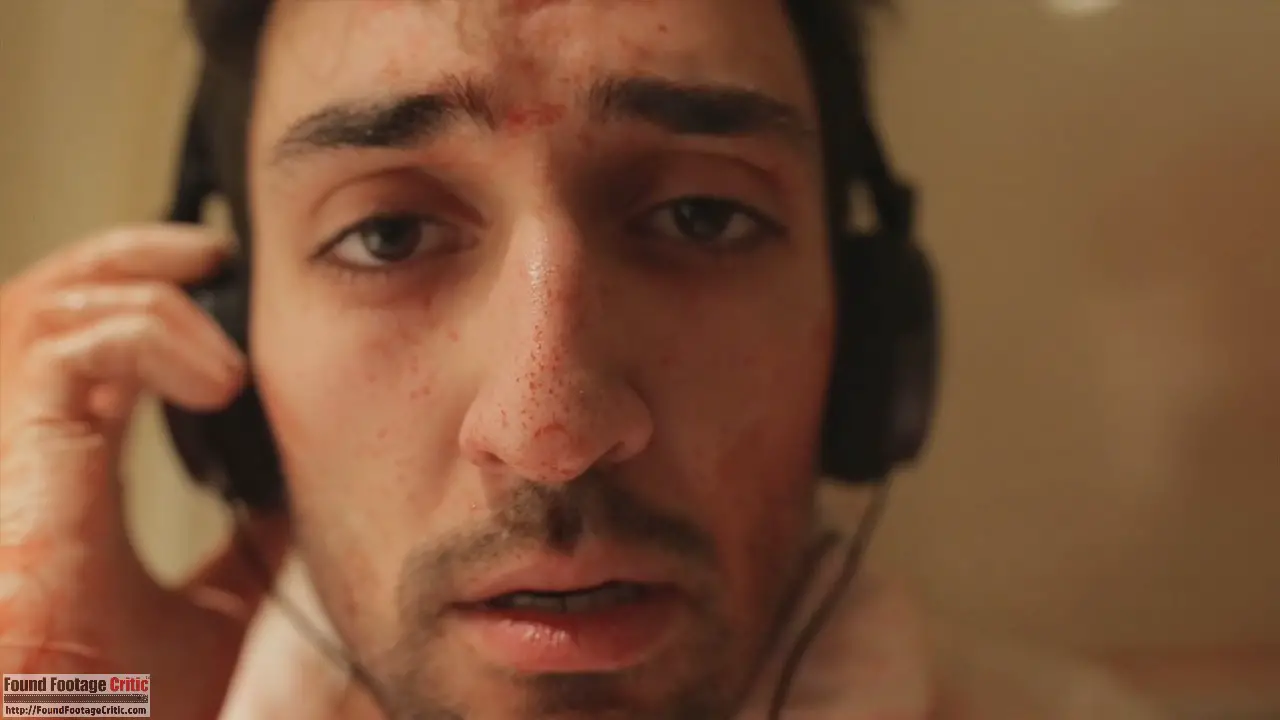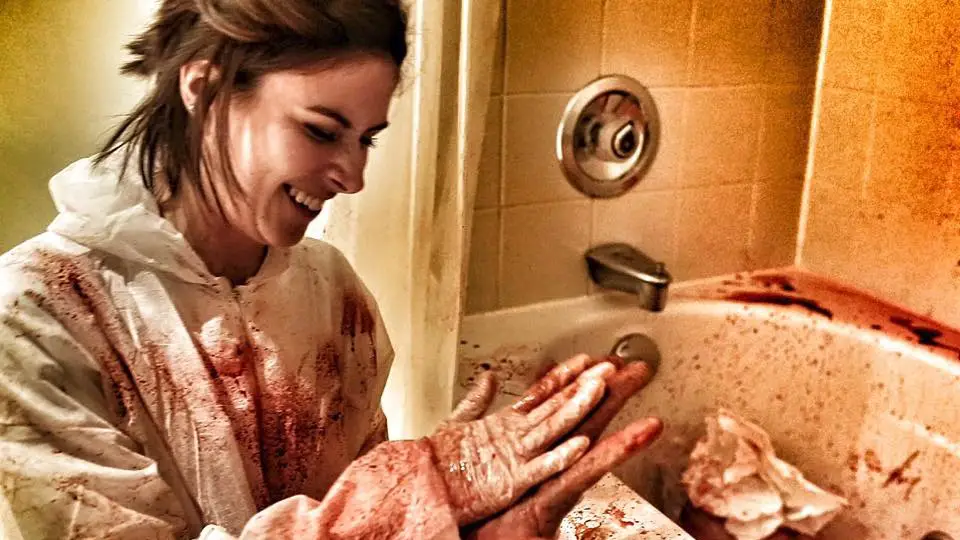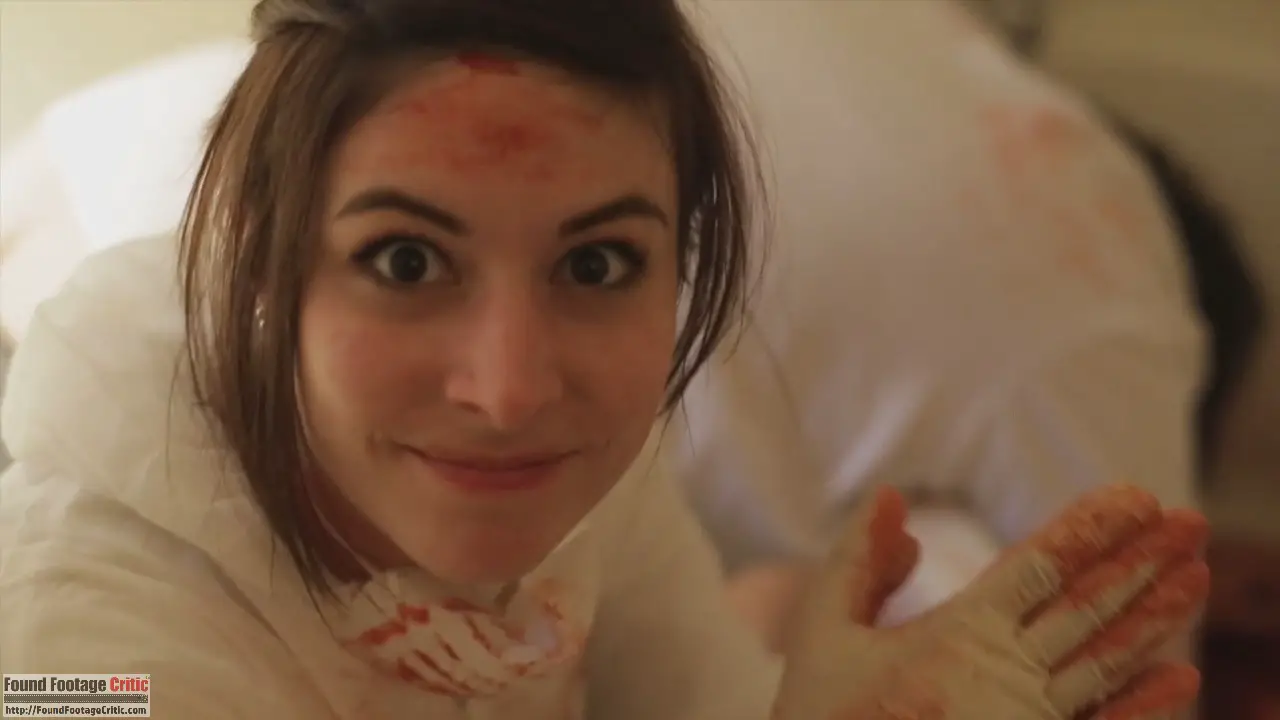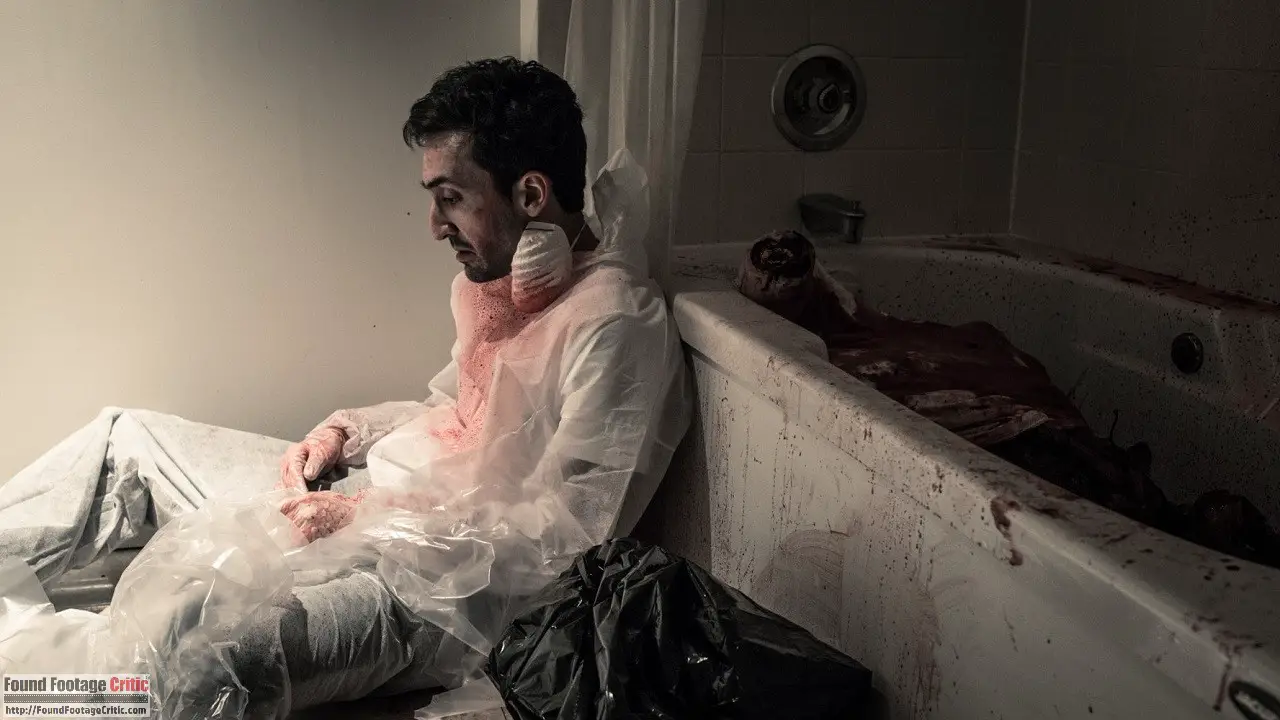“Capture, Kill, Release” is a found footage horror film written by Nick McAnulty and directed by Nick McAnulty and Brian Allan Stewart. The movie takes the form of a documentary by two aspiring killers who film each step in the process of preparing for their first victim.
Capture, Kill, Release opens with a largely unintelligible 911 call, the subject matter of which makes itself known later in the story. From here the film transitions to Jennifer (Jennifer Fraser) who gleefully admires her new handheld video camera. She spends some time playing with her new toy and excitedly films her husband Farhang (Farhang Ghajar) arriving home from work.
We quickly learn that the couple is planning on killing a random person to experience what it feels like to take another life. The couple exhaustively researches and discusses in gory detail the entire process of capturing, killing, and disposing of a person.
Among the more entertaining discourse between the couple is how to pick the best victim. To avoid suspicion, the couple decides that they should not select a victim that either of them knows. As for choosing a target, Jennifer aptly says, “It’s like a buffet. It’s like pick your lobster out of the tank.”
Later on couple visit a hardware store where they purchase murder supplies, including rope, bleach, and various tools to chop up the body. And to Jennifer’s dismay, Farhang also buys caulking for a drafty window in their home.
With their research complete and supplies in hand, the couple is ready to execute their plan. Do Jennifer and Fahrang have what it takes to commit murder? What happens next will change their lives forever.



Acting
Jennifer Fraser’s character is intoxicatingly expressive and charismatic to watch
The acting throughout Capture, Kill, Release is phenomenal from end-to-end. Jennifer Fraser’s character is intoxicatingly expressive and charismatic to watch and her magnetic personality is sure to seduce viewers.
Her character, Jennifer, is a sociopath with no regard for life, human or otherwise. Jennifer’s flippant decision to kill someone just for the visceral thrill or curiosity’s sake is deranged to be sure. What makes Jennifer truly dangerous is her uncanny ability to use her charm and wit to get what she wants.
Despite Jennifer’s maniacal state of mind, she knows how to blend into society and understands the subtleties of behavioral norms. Like the flip of a light switch, Jennifer’s dark side presents itself, usually in private, and most always unexpectedly—this is what makes her character so terrifying and unsettling to watch.
Farhang Ghajar kills it (pun intended) as Farhang, the obedient spouse to Jennifer. He reluctantly goes along with Jennifer’s plan, unable to stand up to her overpowering personality. Jennifer knows how to work her husband, applying the same charm and charisma that she uses to manipulate just about everyone else around her.
Farhang Ghajar kills it (pun intended) as Farhang
Jennifer Fraser and Farhang Ghajar have great on-screen chemistry. At first, viewers are left to wonder how a quiet introvert like Farhang paired-off with the outgoing and charming Jennifer. Only after Jennifer’s darker side reveals itself does it become apparent that Jennifer’s dominating personality and obsessive compulsiveness can only be complemented by someone who is easily manipulated and controlled.
Also wonderful is Jon Gates as Gary, the friendly and good-natured vagrant that Jennifer befriends while scouting for potential victims. The dichotomy between these two characters could not be greater, nor could the payoff for the setup.
Capture, Kill, Release has no true protagonists, but rather two anti-heroes. Despite Farhang’s horrific deeds, the film manages to elicit sympathy for his character, as his wife has done far worse. Farhang’s reluctant participation turns begrudgingly necessary as Jennifer fast-tracks her plan, placing Farhang in a position where he must capitulate or face a potential prison sentence. Jennifer is the epitome of evil. She only cares about satiating her obscene desires regardless of the consequences to her husband or unwitting victims (both the two-legged and four-legged variety).
Found Footage Cinematography
The found footage cinematography in Capture, Kill, Release is nothing short of exceptional. The film utilizes two handheld video cameras. Most of the footage is shot using a modern HD video camera purchased by Jennifer, with some footage captured using a legacy VHS handheld video camera Jennifer finds at her parent’s house.
The video shot using the HD video camera is 16:9 aspect ratio (widescreen), while video shot with the older VHS video camera is appropriately captured in 4:3 aspect ratio. The video shot using the older VHS camera is also grainy and laden with ghosting, illustrating the age of the now-ancient equipment.
Interlaced throughout the film are home video clips of Jennifer’s childhood, offering a glimpse of the once innocent child that evolved into the killer we’re faced with today.
Filming Reason
The filming reason used throughout Capture, Kill, Release is perfect. The main anti-hero, Jennifer, is singularly focused on creating a documentary about her desire-turned-obsession over killing someone. Jennifer is intent on documenting the brainstorming, preparation, execution, and aftermath of her nefarious plan.
Her sociopathy transcends any common sense that would otherwise question why the camera continues to roll during times of high-stress when an otherwise sane person would stop filming. During scenes filmed by Farhang, Jennifer threatens her husband when he expresses the slightest interest to stop filming. Her obsessive nature and singlemindedness drive the filming reason from the opening scene of the film through the bitter end.


Found Footage Purity
The found footage purity is an overall measure of the found footage technical correctness of a film. Capture, Kill, Release does an outstanding job at creating a final product that comes very close to approximating actual found footage. The film wavers ever so slightly from achieving a perfect score due to the film’s use of sound design during several scenes, presumably to increase tension. Additionally, the film does not provide a clear explanation as to who edited the final feature film, although the assumption can be made that Jennifer performed most (but not all) of the editing as part of her documentary.
Plot
The found footage genre includes several films in recent history that explore a “murder documentary” from the killer’s perspective. Capture, Kill, Release bears a resemblance to the similarly themed House With 100 Eyes (2013), which follows a charismatic husband and wife team who document how to make a snuff film, covering everything from identifying and capturing their victims to choosing and using the right weapons for the job.
Cat lovers may find this film difficult to watch
A more recent found footage film from Hungary, A Guidebook to Killing Your Ex (2017), examines the murder documentary from the perspective of a disgruntled man intent on killing his ex-girlfriend. The anti-hero documents his experience as a guidebook for the benefit of other exes with similar aspirations.
The murder documentary storyline presents a wealth of opportunity for entertaining narrative. Each of the abovementioned films makes light of the decisions that go into selecting the right victim. After all, what does make for a good murder victim? That, of course, depends on the twisted mindset of the killer. In A Guidebook to Killing Your Ex (2017) the killer has a clear motive, he wants revenge on his ex-girlfriend. In House With 100 Eyes (2013), the anti-heroes are experienced snuff filmmakers—their perfect victims are good-looking young men and women who are down on their luck and could be easily lured back to the anti-heroes’ house.
Who are the perfect victims for Jennifer and Farhang in In Capture, Kill, Release? The two anti-heroes discuss this topic at length. In one of the more humorous scenes in the film, Jennifer and Farhang rule out minorities and homosexuals to avoid having the kill labeled as a hate crime. They also exclude the physically handicapped because “their lives are bad enough.” Jennifer finally declares, “Equal murder opportunity for everyone.”
Gore hounds will appreciate Capture, Kill, Release once the film reaches the meat of the story (pun intended). Moviegoers not used to (or who don’t like) hardcore gore and cat lovers may find this film difficult to watch.











